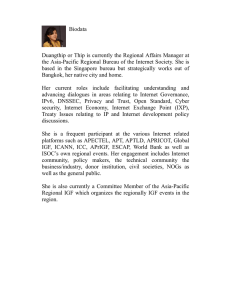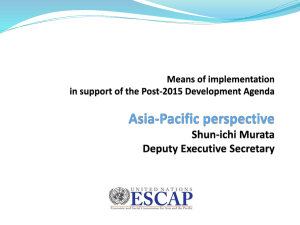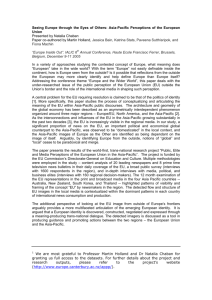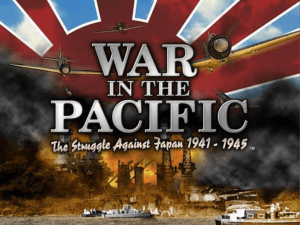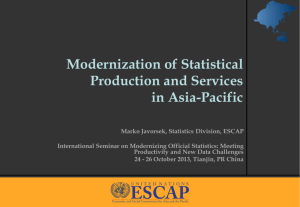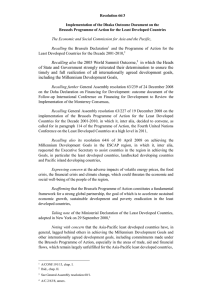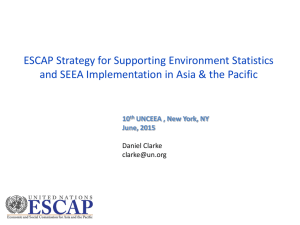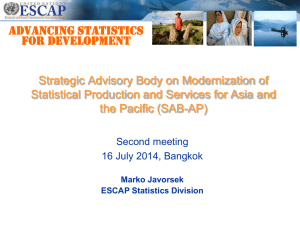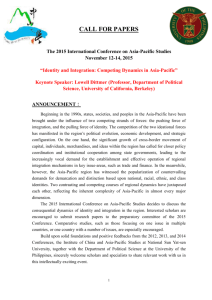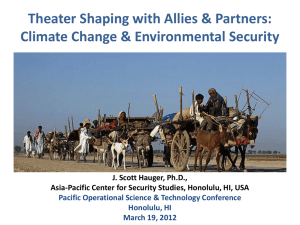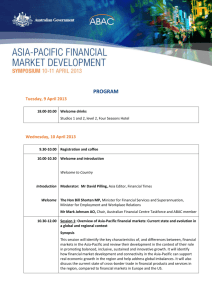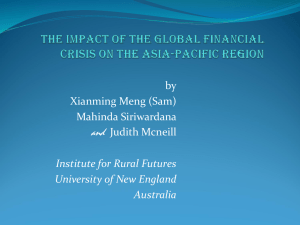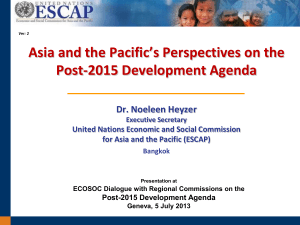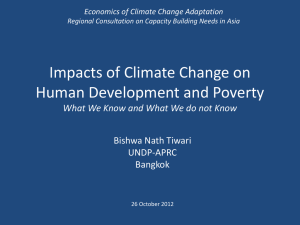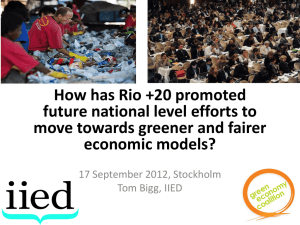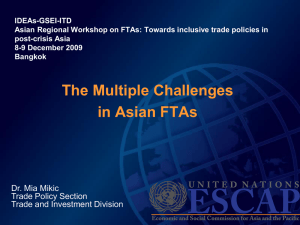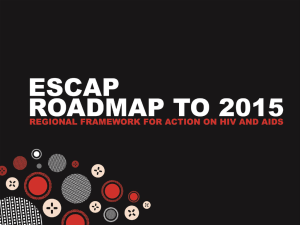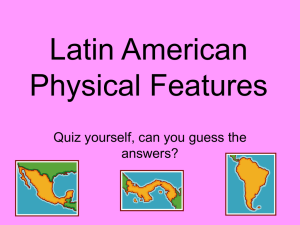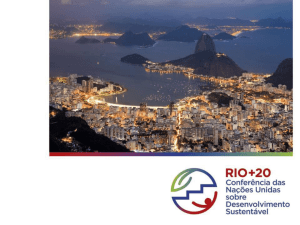escap - The UN Regional Commissions
advertisement
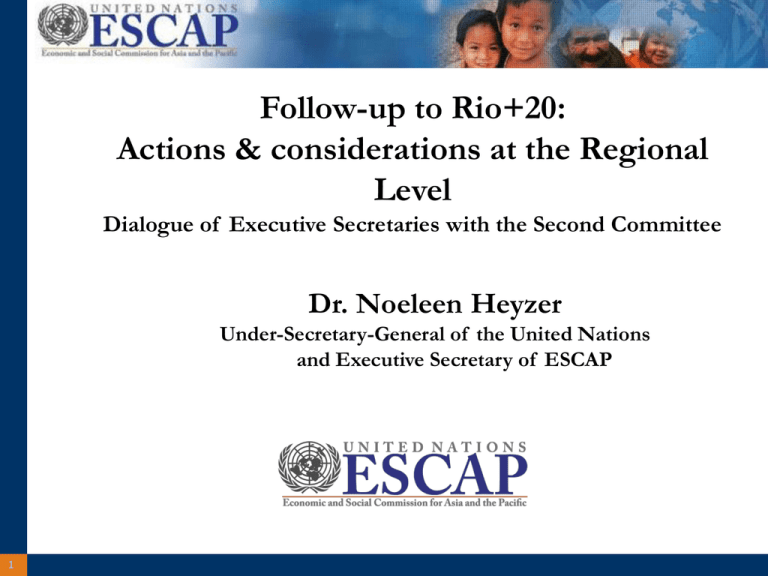
Follow-up to Rio+20: Actions & considerations at the Regional Level Dialogue of Executive Secretaries with the Second Committee Dr. Noeleen Heyzer Under-Secretary-General of the United Nations and Executive Secretary of ESCAP 1 The Rio+20 Challenge Creating a new, better model for 21st century economies “With smart public policies, governments can grow their economies, alleviate poverty, create decent jobs & accelerate social progress in a way that respects the earth’s finite resources” - UNSG Ban Ki-Moon 2 Asia-Pacific Regional Context Home to 3.9 billion (about 56% of global population) About 46% live in urban areas About 36% of global GDP and 34% of world exports Highest regional growth (about 5.6%) in 2011 Almost 40% of global energy demand in 2011 About 80% of global disaster losses in 2011 3 Threats to Asia-Pacific Development Persistent Problems: Poverty, hunger, growing inequalities, energy, water, health & vulnerable jobs Emerging Issues: Transboundary issues such as financial crises, commodity price volatility, natural disasters & climate change The “New Normal” of global turbulence, uncertainty, and volatility 4 Asia-Pacific Development In spite of growth most Asian populations still in rural areas & employment remains deeply vulnerable Most Asia-Pacific countries have only limited social protection systems Financing for inclusive & sustainable development Rio+20 has challenged us to go even further 5 Regional Development Solutions Must rebalance & integrate the 3 pillars of sustainable development Asia-Pacific already moving to begin this process Rio+20 Outcome Document: Specific new mandates for UN Regional Commissions New Regionalism: Regional Solutions Expanding South-South & inter-regional cooperation 6 ESCAP: Efforts & Initiatives Intergovernmental: Engagement with Member States, Role of Annual Commission & Conference Structure Review Institutional: Reorienting Flagship Publications, Strengthening the RCM & Regional/Global State of Sustainable Development Report Substantive: Inter Alia: Green Growth, Energy, Transport, Urbanization, Oceans & Support to LDCs 7 ESCAP: Intergovernmental Engagement with Member States Focusing the Role of the Annual Commission Session Conference Structure Review 8 ESCAP: Institutional Reorienting Flagship Publications: Economic & Social Survey; Theme Study; Asia-Pacific MDG Report etc. Strengthening regional UN coordination through the Regional Coordination Mechanism (RCM) Regional & Global State of Sustainable Development Report 9 ESCAP: Substantive Green Growth: Low Carbon Green Growth Roadmap Energy: ‘Asian Energy Highway’ Water: Resilient Systems & Economics of Supply Food Security: Sustainable agriculture & poverty reduction Transport: Dry Ports/Regional Connectivity Oceans: Special Case of the Pacific SIDs Support to LDC’s: DRR, SPECA & Fragile States 10 Conclusion Sustainable development is a truly generational opportunity for change Our ability to shape and contribute to this change has never been greater. For Asia and the Pacific, Rio+20 was a key milestone in our journey to a more inclusive, sustainable and resilient future. 11 Thank you 12
